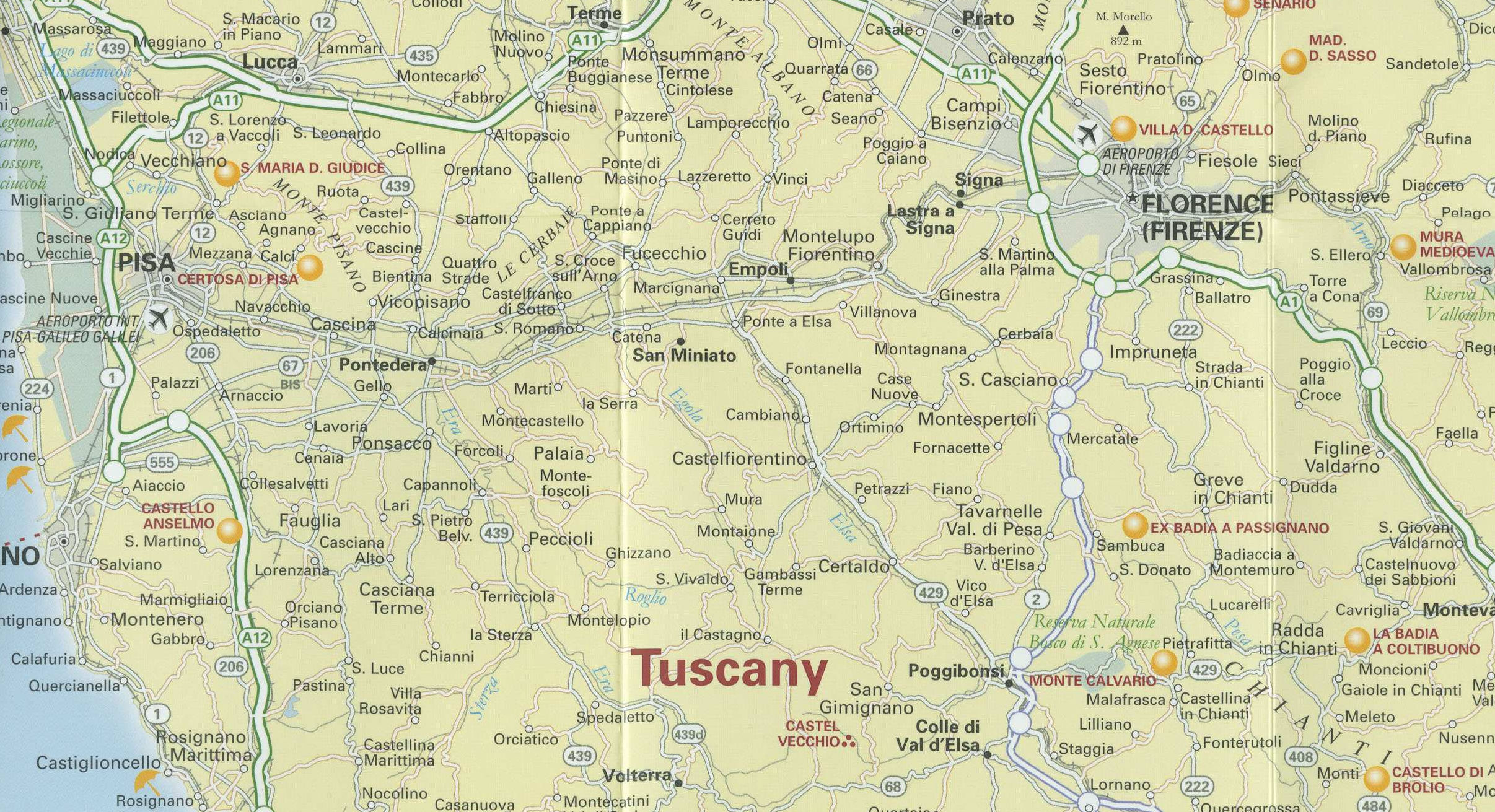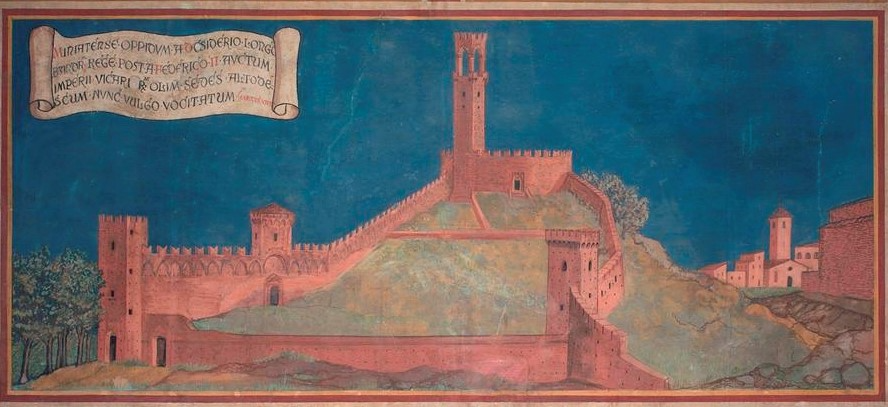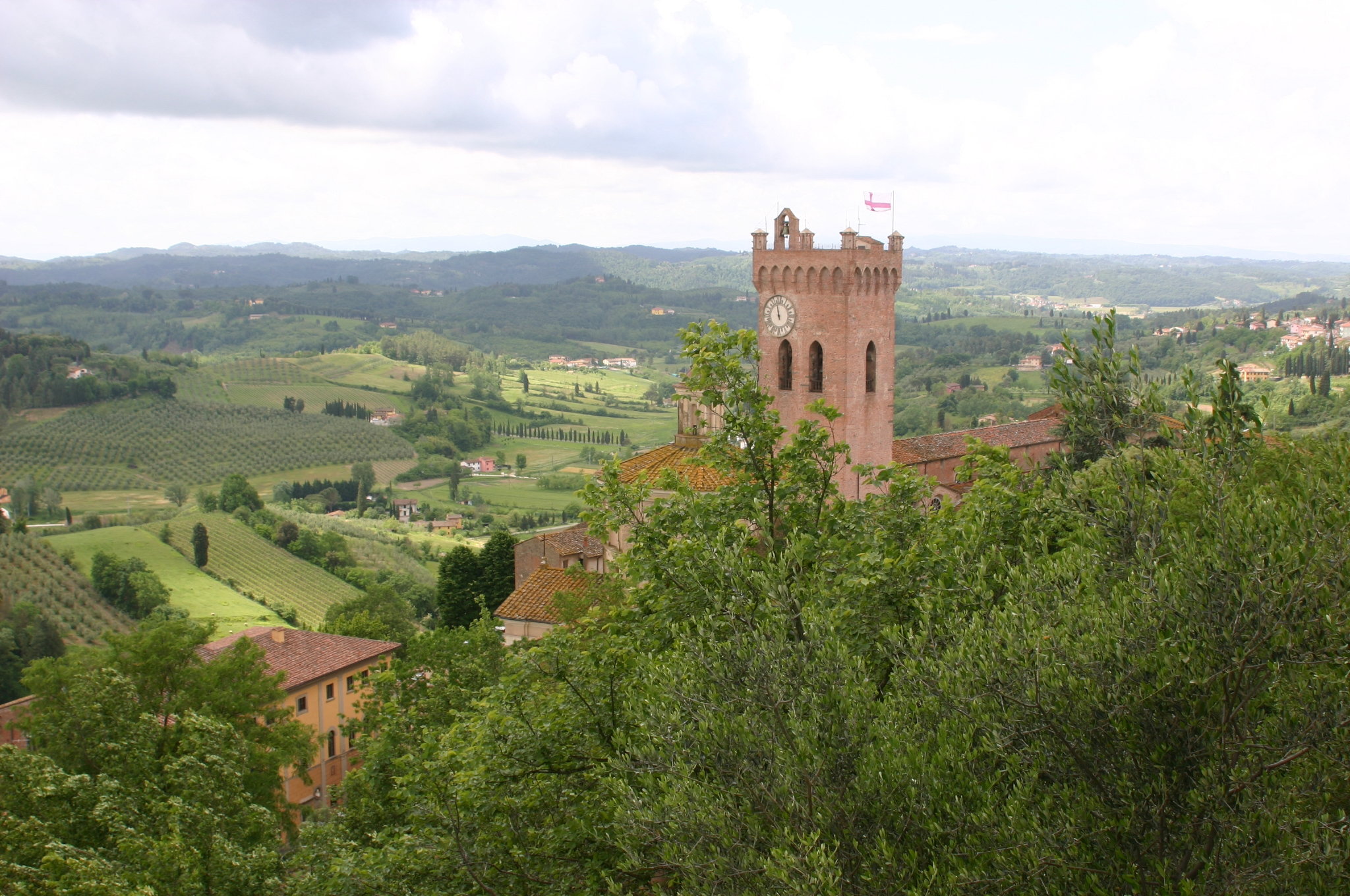San Miniato al Tedesco
San Miniato al Tedesco (of the German) is a small hill-top town in Tuscany about 25 miles (40 kilometres) south-west of Florence.
It dominates the lower valley of the river Arno and was, in the middle ages, at the crossroads of three important land routes: the Via Francigena, the pilgrim way from northern Europe to Rome; the road between Florence and Pisa; and the road from Lucca to Siena.
Its wealth in the later middle ages came from the agriculture in its surrounding contado (countryside) and, most importantly, from the tolls imposed on traffic between Florence and Pisa. San Miniato was on the land route that Florentine merchants relied on for shipping imports and exports through Porto Pisano and, later, Livorno, a cause of constant friction. At the height of its medieval prosperity, in about 1300, San Miniato had a population of around 5,000, falling to less than 2,000 after the Black Death which broke out in Pisa in the autumn of 1347 and spread rapidly across Tuscany.
Like most of the small to medium-sized medieval Italian towns in central and northern Italy, San Miniato struggled to maintain its independence as Holy Roman Emperors, neighbouring city states and the Papacy sought to establish their political hegemony. In the late twelfth and early thirteenth centuries San Miniato fell under the imperial control of the Emperor Frederick II (1194-1250) and so gained its soubriquet, ‘al Tedesco’ (of the German). Yet its chief enemy was always Florence, wishing to secure its own frontiers and remove all obstacles hindering the trade of its merchants. External threats to the town’s independence were mirrored by internal disputes between agrarian landholders from the contado and newly rich merchants and lawyers eager to assert their own authority.



